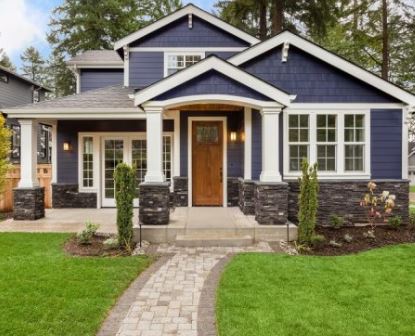PASCO COUNTY, Fla - The rise of remote work has the potential to unlock the American Dream of homeownership for nearly two million renter households.
PASCO COUNTY, Fla – The rise of remote work has the potential to unlock the American Dream of homeownership for nearly two million renter households. A new Zillow® analysis finds that’s how many renter households could likely telecommute and afford monthly payments on the typical U.S. starter home, but couldn’t afford a starter home in their current metro.1
The numbers are more pronounced in expensive coastal metros like San Francisco, where 22% of renters priced out of their metro could afford monthly payments on a typical U.S. starter home, estimated at $7252. Monthly payments on a typical San Francisco city starter home are more than seven times higher, at $5,181. More than 10% of renters who couldn’t afford to buy in the city of San Francisco, could afford a starter home within the greater San Francisco metro area, offering more options farther afield to aspiring buyers who no longer need to commute to the office five days a week.
In cities such as Minneapolis, Phoenix and Denver, the opposite is true. In Denver, for example, starter homes in the city are more affordable than in the metro area, yet 14.5% of renter households priced out of homeownership in the Denver metro could afford a typical starter home elsewhere in the country.
Not all renters will find it more affordable to buy a home outside their current metro areas. Places such as Pittsburgh, El Paso and Rochester offer more affordable starter homes than the country as a whole, meaning aspiring buyers would have to pay more if they wanted to leave.
Zillow’s analysis looked at renter households for whom monthly payments on a starter home in their metro are unaffordable, but would be affordable on the typical U.S. starter home. Those households were then assigned a probability of being able to telecommute based on income, the worker’s industry and occupation.
“If remote work becomes a bona fide long-term option especially with the pandemic, that could reshape the U.S. housing market by opening up homeownership to people renting in expensive parts of the country,” said Zillow economist Jeff Tucker. “However, it’s unclear how many people would make the move to buy their first home. Proximity to work is just one of the factors people consider when choosing where to live. Other factors may keep them from moving including proximity to friends and family, cultural and natural amenities, and their kids’ schools.”
The pandemic-led shift to telework has already upended housing preferences, as people rethink how and where they want to live. A previous Zillow survey from the Harris Poll found that if given the option to continue working from home, at least occasionally, 66% of renters say they would consider moving.
Millennials, between 26 and 40 years old, represent nearly half of the 1.92 million renter households who could afford homeownership if given the flexibility to work from home, the largest generational group to benefit from these new options. The average age of these potential movers is 38.
Millennials had been dubbed the “doomed generation,” as a complex tangle of overlapping factors made first-time homeownership a pipe dream for so many. Rapid home price growth outpaced income growth, and a severe inventory shortage sparked intense competition for starter homes, locking many first-time buyers out of the market. High levels of student debt have also made it difficult to save for a downpayment, driving 8.6 million millennials to move back home with Mom and Dad as of June 2020.
The American Dream may have been delayed, but it hasn’t lost its luster for this generation. In a 2020 Zillow survey, 61% of millennial renters said they are likely to consider buying a home.3 This massive generation was already on track to bring a wave of first-time buyers to the market, with an extra 3.11 million people reaching prime homeownership age in the coming years.
“Two-thirds of our buyers are millennials,” said Zillow Premier Agent Holly Mellstrom, a Pelham, NY-based associate broker at Julia B. Fee Sotheby’s International Realty. “They’re looking to put down roots and get more space for their money after high-rise city living. Many have young families and were planning to move to the suburbs in the future, but they’re making the move now because they don’t anticipate having to commute into the city to work everyday.”
Chris Chan, 40, and his wife, Eunice Lee, 35, became home buyers during the pandemic, moving from a two-bedroom co-op in Brooklyn to a five-bedroom house in Westchester County, NY.
“The tipping point was envisioning both of us working from home indefinitely alongside our daughter and a second child on the way,” said Chan, who works in Connecticut. “We wanted to maintain the balance between space and proximity to the city. We could get more for our money just outside city limits and we’re still only 30 minutes from Grand Central Station.”
